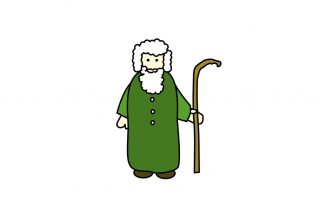

How much do you know about magnetism and electromagnetism?
Magnets are all around us, and used in many appliances. They are a basis component of disk drives in your laptops and computers. In fact, the hard drive relies on magnets to store data. In addition, monitors use magnets to create images on screen. Your doorbell probably uses an electromagnet. Also magnets are found in speakers, alarms and speedometers in cars. And don’t forget about the magnets stuck to your fridge!
People have been aware of magnetic materials for many centuries. The ancient Greeks and Chinese used lodestones. Lodestones are actually magnetite, which forms when magma cools slowly, and is an iron oxide. In fact, the word magnet originates from ancient Greek. Legend says a Greek shepherd, named Magnes, lived in a region of Greece known as Magnesia. Whilst tending his sheep, his metal staff, and nails in his shoes suddenly stuck to the Earth. After digging down he discovered magnetic lodestone!
People used lodestones to magnetize iron and hang it from string to become the first magnetic compasses! Lodestones fascinated the Ancient Greeks, with them believing they had magical healing powers. As early as 200 AD magnetic rings were used to alleviate the pain of arthritis. Some people still believe in using magnets to treat many diseases and conditions, ranging from arthritis to cancer. For example, wearing magnetic bracelets, using magnetic pillows, and even drinking magnetised water. Pulses of electromagnetic energy are even used to help prevent bone and muscle loss in astronauts after extended periods of time in zero gravity
GCSE scientists – you need to be able to describe how magnets and electromagnets work. For help, try our new guide “How to work with Magnetism and Electromagnetism”. It includes information about magnetic fields and the uses of permanent and induced magnets. There is also an explanation of how electromagnets work, and the motor effect. As always there are questions to try, and answers to check your understanding.
Click on the picture below to see the guide.
If you found this useful and think you would benefit from some additional help, please contact us.
